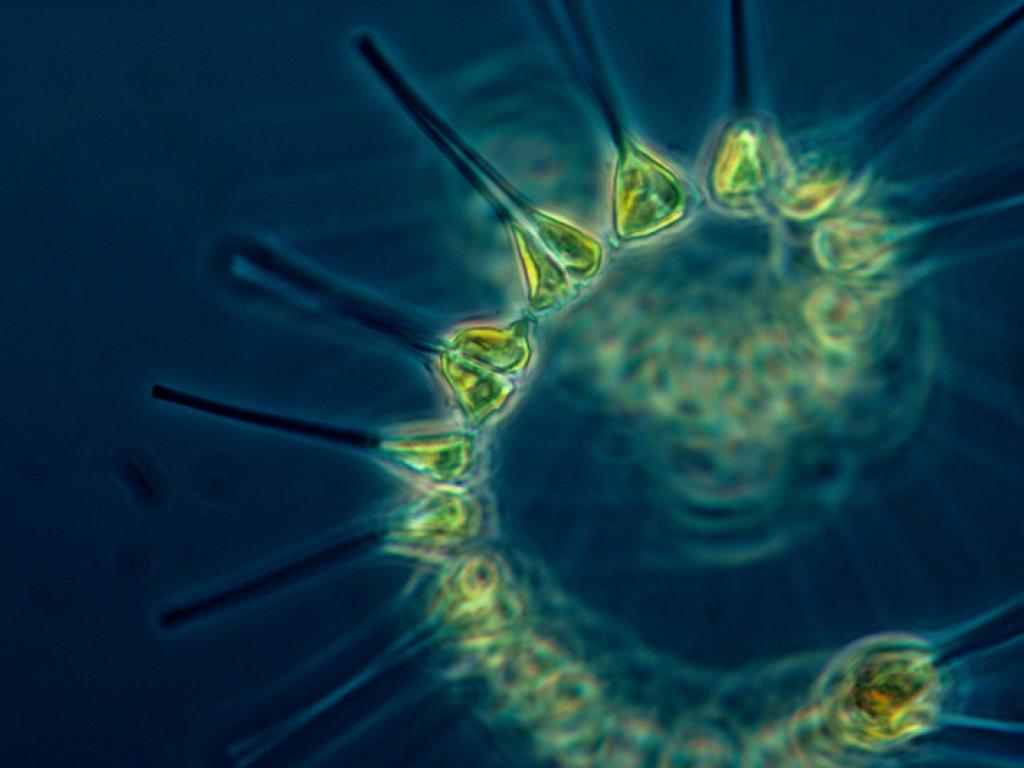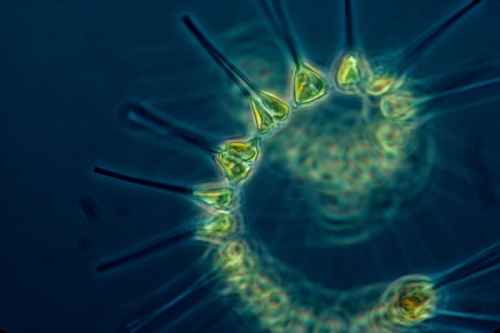Microscopic marine creatures driving Earth’s temperature


Phytoplankton – microscopic organisms that live in water – vary in size and shape. Like land plants, they can photosynthesize and turn sunlight into energy, placing them at the base of aquatic food webs.
The global ocean covers about 71% of the earth’s surface and contains approximately 97% of all water on the planet.
In some ways, the ocean is more important now than it ever has been before. The planet is warming and more carbon dioxide is being released into the atmosphere. The ocean is the biggest absorber of carbon dioxide from the atmosphere. Its carbon dioxide absorption far surpasses the uptake by all forests combined on planet earth.
The amount of carbon dioxide that the ocean can take up depends on the temperatures of the waters. Cold waters absorb more carbon, while warmer waters take up less. This happens through a biological process that sees carbon dioxide from the atmosphere dissolved in the surface waters of the sunlit upper ocean, then pumped into deeper water layers and the ocean floor.
Phytoplankton are primary producers of the marine ecosystem. This means that the marine food web primarily depends on phytoplankton.
But there’s more to it than just water temperature. Microscopic organisms known as phytoplankton are the main drivers of this “biological pump” process. For my PhD, I’m researching these phytoplankton communities and their interactions with nutrients within ocean systems. I want to understand how the biological pump is working within the Agulhas marine system, a marine region between East London and Port Elizabeth in South Africa.
The Agulhas system is a hot spot for fisheries and aquaculture industries that feed billions of people across the world. The region is also responsible for regulating Southern Africa’s climate and weather. Understanding how the system works in a warming planet allows us to predict how the ocean will be in the future.
It is also important for advising policy makers and guiding industries on which parts are most productive at what times of the year as the region is very dynamic and varies from season to season.
With the use of nitrogen isotopes, my research is part of a growing body of work that’s trying to understand the dynamics of the ocean, and the role it plays in global warming and overall, global climate change mitigation. Over and above my work is uncovering the role that the ocean plays in regulating the Earth’s temperature and therefore making our planet habitable.
Phytoplankton
Phytoplankton vary in size and shape; their physiological makeups enable diverse environmental specialisation. This means that different types of phytoplankton can be found in diverse ocean environments depending on geography, temperature, salinity, pH and nutrients availability.
For my PhD, I’m researching these phytoplankton communities and their interactions with nutrients within ocean systems.
Phytoplankton are primary producers of the marine ecosystem. This means that the marine food web primarily depends on phytoplankton. They also photosynthesise like land’s primary producers, plants. They take up carbon dioxide to manufacture their own foods and are responsible for giving off about more than half of the oxygen that animals need to breathe back into the atmosphere. That’s an impressive contribution from organisms that can’t be seen with the naked eye.
Using sophisticated techniques and equipment, I am sorting the phytoplankton communities in the Agulhas system based on how they fluoresce – that is, light up. This helps me to organise them by different species that perform different functions. I’m also investigating how two size classes of diverse phytoplankton communities take up various species of nitrogen within the nutrient starved waters of the Agulhas marine system.
I focus on two nitrogen species; only one of them, nitrate, is responsible for drawing carbon down from the atmosphere. Additionally, I investigate the productivity of the ocean. This involves looking at which parts of this ocean basin have the most phytoplankton and where nutrient uptake is most efficient. I closely study and calculate the uptake rates of the nitrogen species and carbon export within this ocean basin.
My research will ultimately allow us to understand how the various phytoplankton communities in the Agulhas marine system take up different nitrogen species. This is directly related to the amount of carbon dioxide that can be pumped into the ocean’s interior.
This is one of the very few studies looking closely at marine biogeochemistry of the Agulhas System Climate Array system. Marine biogeochemistry is an interdisciplinary field of oceanography that deals with the relationships between marine chemistry, marine biological and geochemical processes with the aim to uncover the interactions and responses between ocean chemistry, marine biology and global change.
Seeking answers
My research will ultimately allow us to understand how the various phytoplankton communities in the Agulhas marine system take up different nitrogen species. This is directly related to the amount of carbon dioxide that can be pumped into the ocean’s interior.
Calculating the rates will ultimately reveal the rate at which carbon is being exported through the “biological pump” process to the deep ocean. When we know this, we’ll have a better understanding of just how productive the system is in terms of absorbing and circulating carbon dioxide. This will ultimately help us understand how the planet cools itself in a warming world.![]()
Kolisa Yola Sinyanya is a PhD candidate in the Department of Oceanography at the University of Cape Town.